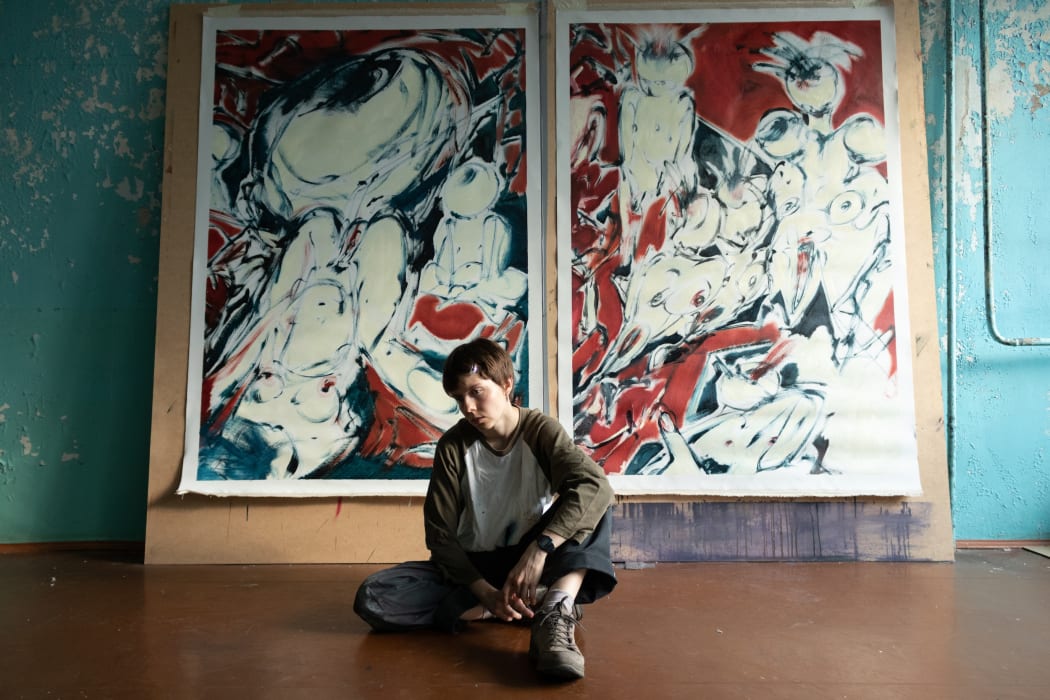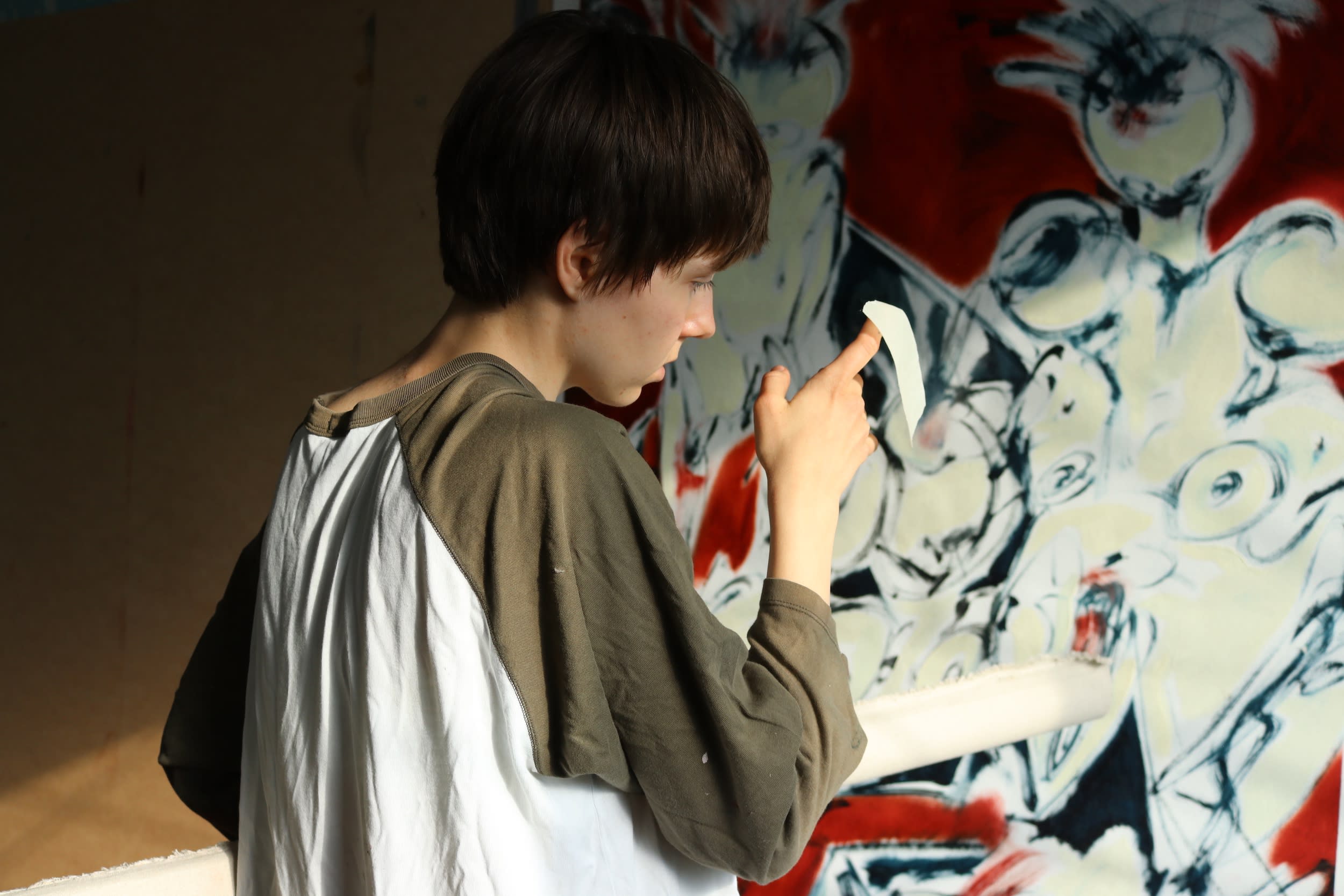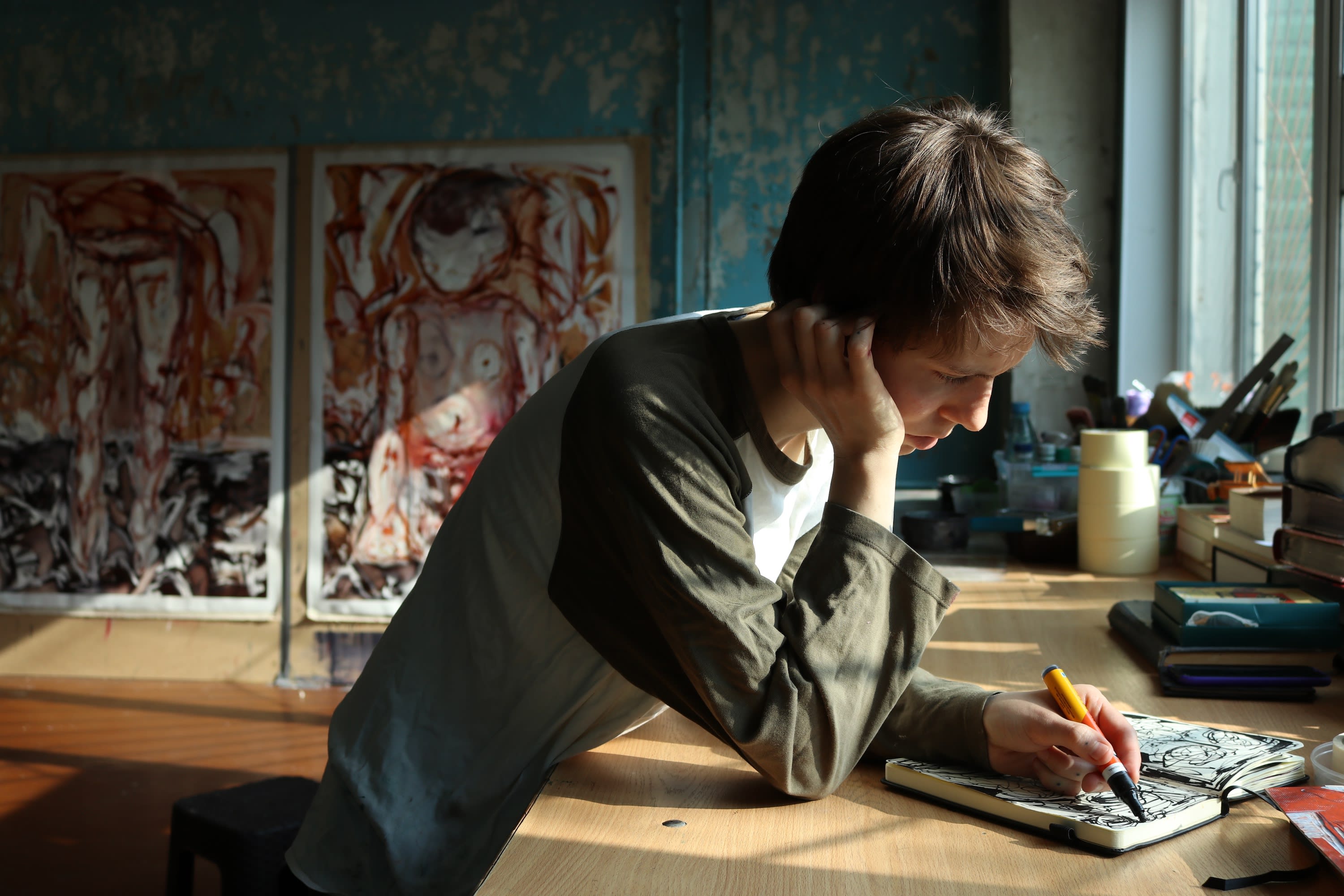
Who are you and what do you do?
My name is Arina, I am an artist and а feminist. I mainly do painting, for which I usually write a little lyrical accompaniment. These notes are a safe space for me, a place where I can voice my thoughts and experiences or put together a manifesto.
When did you first realize you wanted to become an artist? or - how did you become an artist?
I started drawing early on and have always been attracted to the visual. I have been researching anything related to art, listening to lectures and interviews with artists, making notes in my head and accumulating knowledge.
After gaining a critical mass of frustration I quit my full time job, immersed myself in reflection and began formulating answers to questions most fundamental to me. These were sluggish and indecisive months of self-identification. I thought about women and their fates, my childhood and the pain inside me that has no outlet. At that time, I met someone who believed in me and I truly believed in feminism. That's how I got to the question “Who was my mother and what do I remember about her”. I rediscovered photo albums, found her notebooks and medical books. I started sketching from reference books, reading about illnesses and thinking about her a lot. Thus began my self-discovery, a path to painting and getting to know my mother a little better.

What was the first artwork you made?
"Mother."
How has your practice changed over time?
I believe my journey is too short yet to confidently discuss any transformation. Yet, I can assert that my visual language remains fluid. I explore new mediums, techniques, and reflective sources that imprint themselves onto my work. This process resembles growing up — absorbing knowledge, adopting new forms of communication. It appears to be an endless process.
How do you work? (Tell about your process, favorite materials, mediums, rituals, what is important)
More often than not, images and scenes come to my mind, like Freudian automatic writing, a layer of the unconscious. Sometimes I watch documentaries or study photo chronicles, based on which I make sketches. I never start painting on a canvas without making a draft in a sketchbook first. There is always a backbone, but it is monochromatic — the colors emerge in the process.

What’s the best piece of advice you’ve been given?
I often find advice potentially harmful and abrupt, capable of distorting perception and radically shifting the course of moving in the right direction. At least, that's been my experience. I am a gullible person who tends to listen to others way more than I should.
Which artists have played a role in influencing you, your vision, your style?
Many! To name a few: Louise Bourgeois, Francis Bacon, Lucian Freud, Tracey Emin, Sarah Lucas, Georg Baselitz, Marlene Dumas, Neo Rauch, Cecily Brown, R.B. Kitaj, Miriam Kahn. These artists and their work have had a profound impact on me. What they all have in common is a combination of strength and pain. Exploring fear and physicality in their work is something that I can deeply relate to.
Tell us about your style?
I work in different painting techniques. I like variety: I can alternate styles, add something new or take away what has been done staying true to myself. Semi-transparent layers that blend in with the ground or a rough, pasty pile of oil — these techniques are merely the outer shell of the subject or the narrative.
What do you dislike about the art world?
Foremost in my mind is the division of art into gender-based categories: male and female. I refuse to be pigeonholed as a hyphenated “woman-artist”. I yearn for equal rights and to transcend the dichotomy.

Could you recommend any music/book/film you`ve been listening/reading/watching lately?
Music: Emahoy Tsegué-Maryam Guèbrou, “Ethiopiques” compilation vol. 21. She was a remarkable composer and nun. I recommend exploring all the “Ethiopiques” compilations — it's a revelation.
Movies: “All the Beauty and the Bloodshed”, “Neo Rauch - Gefährten und Begleiter”, “Titan” by Julia Ducournau.
Books: “Selected Poems” by Natalia Gorbanevskaya.
What would you like to be remembered for?
Fighting for women's rights.
What has been your most enjoyable project or commission?
Currently, my practice follows a linear trajectory without pronounced project branches. I always experience intense emotions whenever I'm engaged in my creative process.
Describe a real-life situation that inspired or influenced you in any way the most?
The loss of my mother, along with the violence I myself experienced. Not primarily as an event, but as a fact that I have long tried to articulate to myself in order to realize the full horror of what happened and to find the strength to work with this knowledge for the sake of other women. 
What role does art have in society?
Art is both fundamentally spiritual, akin to religion, and as ephemeral and malleable as fashion. This doesn't diminish its value — it enhances its accessibility. Everyone can discover what resonates with them — whether it's profound and somber or vibrant and radiant. The power of art lies in its capacity to delve into people's lives, tugging at their emotions and thoughts, sometimes even catalyzing revolutions.
What is your idea of success for an artist?
Every artist charts a course from point A to success at point B. Along this trajectory lie numerous micro-successes, such as producing work considered one's best, exhibitions, residencies, gallery collaborations, or simply maintaining a creative practice. It's about representation. Success and goals are notions too extensive to confine to a narrow definition. For me, success entails being visible, which subsequently allows me to spotlight subjects that hold personal significance.
